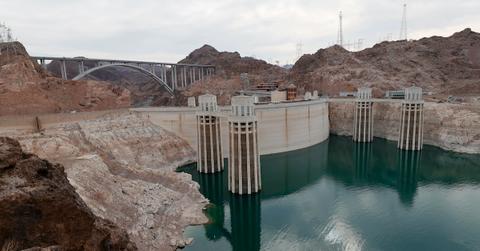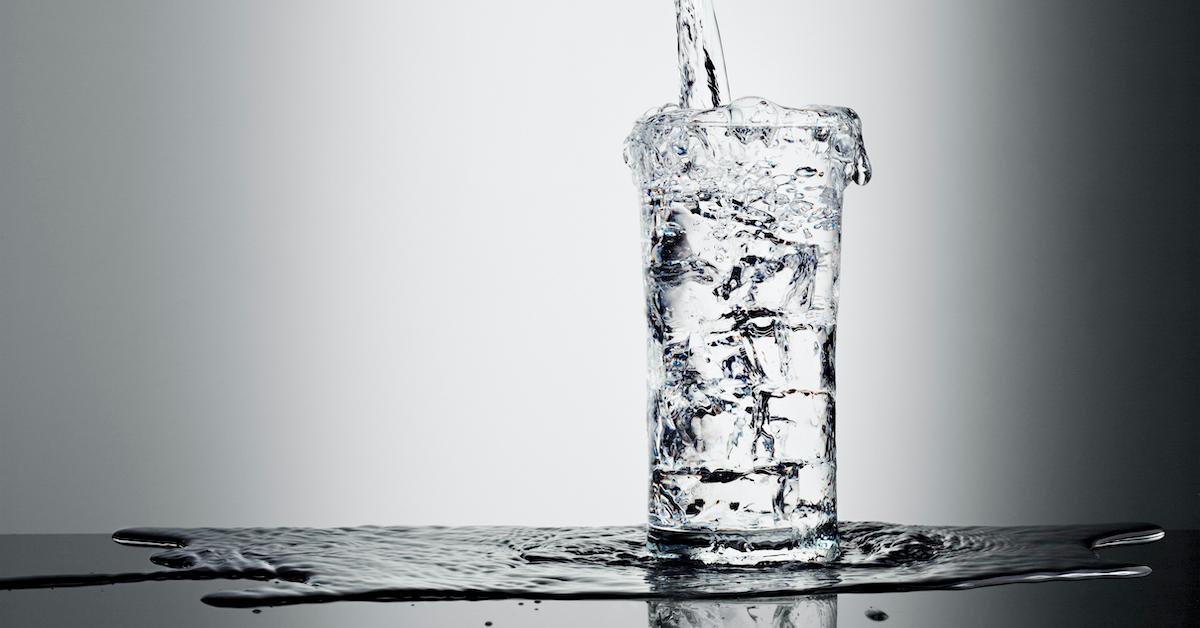EPA May Soon Classify PFAS, aka "Forever Chemicals," as Drinking Water Contaminants
Published July 14 2021, 12:48 p.m. ET

PFAS chemicals, infamously known as “forever chemicals,” are present all around us — including in our drinking water. And after years of experts and environmentalists pointing this out (as well as the dangers PFAS pose), the Environmental Protection Agency (EPA) may finally do something about PFAS in drinking water in the U.S.
However, it could take a while — not to mention, the EPA’s history with regulating PFAS in the environment has been a bit of a rollercoaster. Keep reading for all the details.

The EPA may finally set limits on PFAS content in drinking water.
As of now, there are no federal limits on PFAS concentrations in drinking water in the U.S., though a few states do have rules regulating “fewer than 10” kinds of PFAS chemicals, as per The Guardian. There are 9,252 PFAS chemicals in existence, and PFAS chemicals contaminate drinking water at about 1,400 sites across 49 states, affecting more than 110 million Americans, according to the EPA — so regulating under 10 of them in just several states is certainly not enough.
But this week, the EPA revealed that it may implement a new policy that would set limits on PFAS content in drinking water, as reported by The Guardian. Specifically, the EPA is considering including PFAS on the agency's list of water contaminants, as per Wyoming Public Media.
The EPA hasn’t shared many details about this possibility, and The Guardian notes that this announcement is just the first step in a process that will likely take several years. That said, Anna Reade, the NRDC's lead PFAS scientist, told Wyoming Public Media that this is a "really promising move from the federal level."
That said, the Biden administration’s EPA has made several efforts to combat PFAS pollution since arriving in the White House in January 2021. For example, in May 2021, the EPA updated the Drinking Water Treatability Database to include PFAS treatment options and “references,” which was meant to help entities that manage water across the nation make better choices regarding PFAS management — but this vague guide doesn’t do much to hold the EPA accountable.
And in April 2021, EPA Administrator Michael Regan created the “EPA Council on PFAS,” which aims to "ultimately reduce the potential risks" that PFAS chemicals present. However, this council will also work slowly — its strategy for safeguarding water, air, and land across the U.S. is a “multi-year” one that will roll out between now and 2025.
"Under the Biden-Harris administration, EPA has made addressing PFAS a top priority," an EPA spokesperson tells Green Matters in a statement. "Over the past few years, science has progressed rapidly, and the agency is moving forward with actions that are based on this new science and a better understanding of the complex challenges so many communities are facing," the spokesperson continued, adding that the multi-year strategy mentioned above is being developed.
And in June 2021 the U.S. Senate and House of Representatives introduced the No PFAS in Cosmetics Act, which, should it become law, would aim to ban all PFAS chemicals from cosmetics. The bill focuses on PFAS chemicals’ negative environmental effects in addition to the ways they can affect human health.
Why are PFAS chemicals called “forever chemicals”?
What makes PFAS so bad, anyway? PFAS, or perfluoroalkyl and polyfluoroalkyl substances, are chemicals that persist in nature (whether that’s the air, water, land, crops, animals, or human bodies) for years, as per Scientific American — hence the name “forever chemicals.”
Exposure to PFAS chemicals, which are commonly used in makeup, fracking, non-stick pots and pans, waterproof items, and more, have been linked to many serious health issues, including a higher risk of testicular and liver cancer, increased cholesterol, slightly low infant birth weights, and an increased risk of high blood pressure for pregnant people, as per the CDC. And PFAS chemicals are so persistent that they have even been found in breast milk samples.
Advocates for ending PFAS use in the U.S. believe that the federal government and its agencies need to step up and lead the fight.
“It’s time for more states and the federal government to follow the lead of Washington state and ban PFAS and other equally dangerous classes of chemicals in products, especially when safer alternatives are found,” Laurie Valeriano, executive director of Toxic-Free Future, said in a statement earlier this year. “Prevention-based policies are critical to ending this harmful and unnecessary contamination of our most precious resources — from breast milk to drinking water.”
While it’s impossible to entirely avoid PFAS contamination, our guide to of PFAS-free makeup brands could be a good starting point for reducing your family’s PFAS exposure.
This article was updated on July 20, 2021 to include a statement from the EPA.